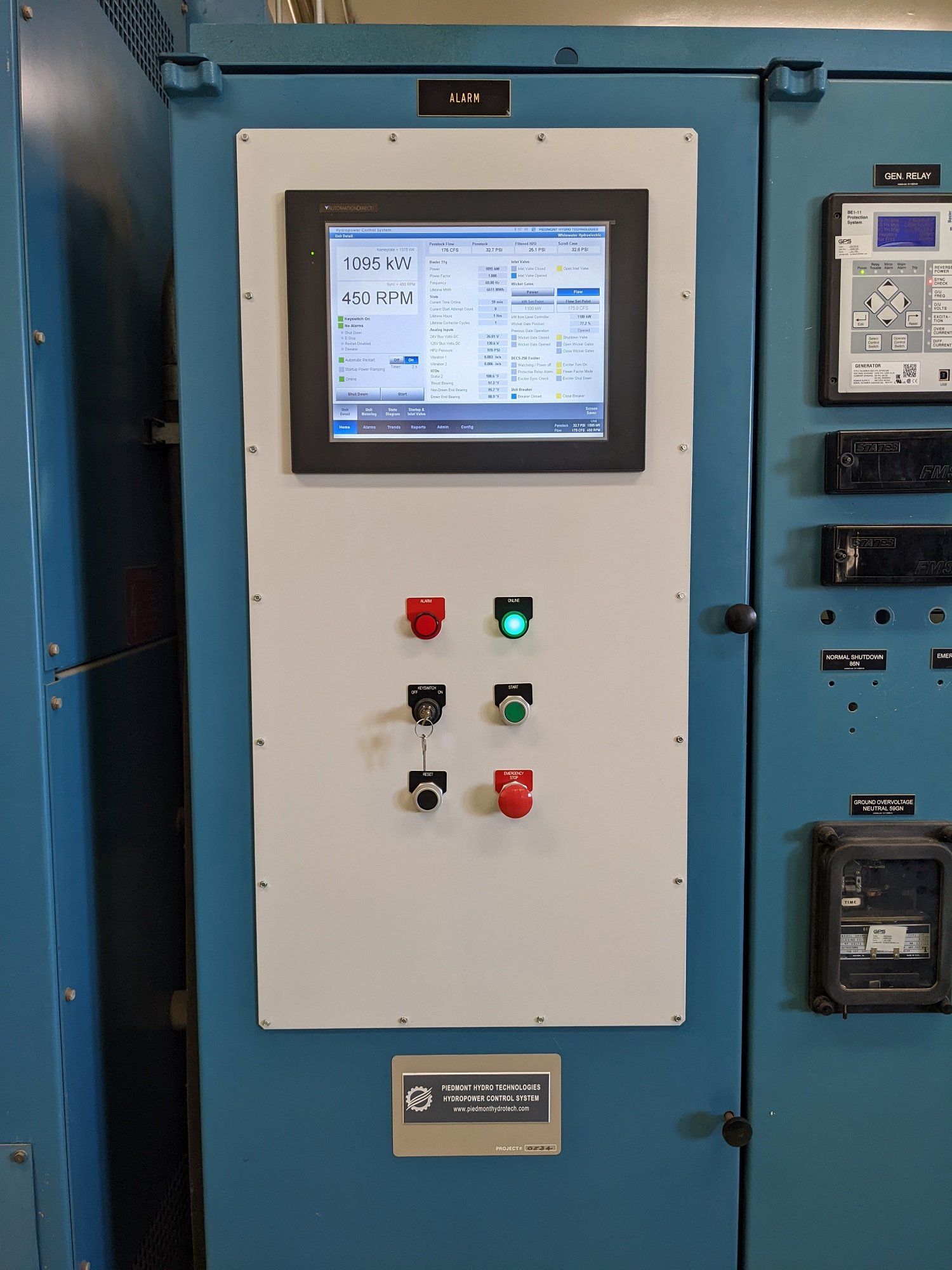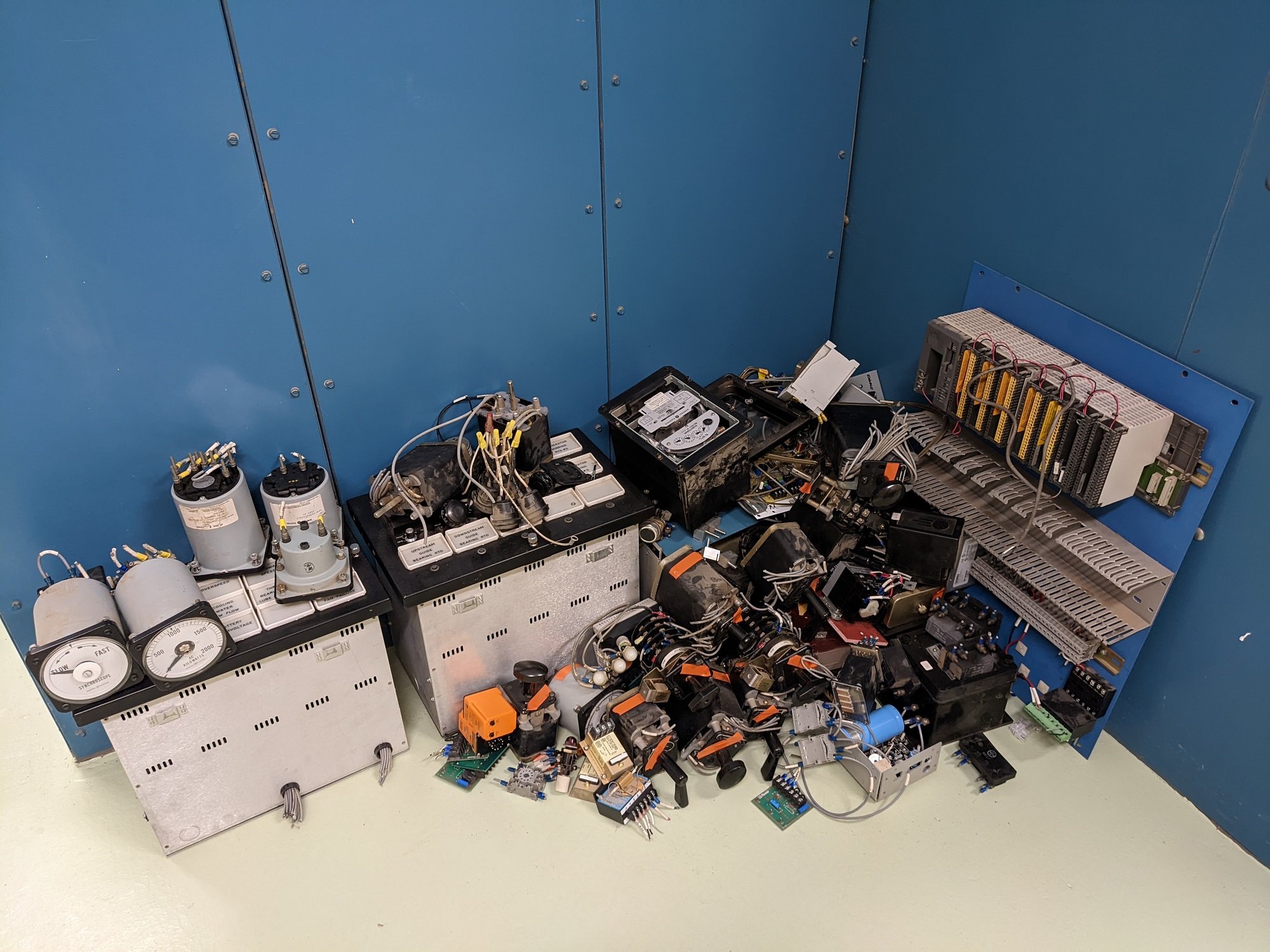PHT Project
1.4 MW, CA
Year: 2022
Running Gear: 1 horizontal shaft Francis turbine with synchronous generator
Scope: Replacement of control system
Constructed in the 1980s for a city water management agency in southern California, this hydroelectric power plant has the somewhat unique distinction of being located in a desert. This is the first plant PHT has ever visited where the water source supplying the turbine is not visible above ground; instead, water is supplied to the powerhouse underground from a canal system and large, complex multi-state inter-basin transfer system with complicated water rights allocations.
The primary use of the water that supplies the powerhouse is for the municipal water supply; hydropower generation is a secondary benefit that takes advantage of the large elevation drop. Water exiting (or bypassing) the powerhouse flows downstream and is stored in a large underground reservoir for residential and commercial water use.
The 1980s era building, running gear, switchgear and electrical service are all in excellent and well-maintained condition. By 2021, the original control system was no longer supportable and needed to be upgraded. Plant start-up was difficult and time consuming. Plant trips were difficult to diagnose and troubleshoot. The controls were unreliable, and lacked features that would enable the customer to effectively and efficiently make use of their hydropower asset, and to coordinate effectively with the other water agencies.
PHT was hired to provide a new PLC based control system with higher level of automation, that would also be reliable, supportable, and more user friendly. Existing machine condition monitoring sensors were largely re-used, but are now monitored more effectively. Additional sensing provided by PHT includes:
Laser position sensor for wicket gates
Water pressure sensors to monitor cooling water supply and filtration
Vibration transducers
HPU pressure transducer for monitoring. The HPU continues to operate using its original pressure switches.
Control cabinet temperature RTD
125 VDC station battery voltage transducer
At most sites, an important feature is headpond level control, but at this site there is no headpond! Instead, the user may select a desired flow rate in cubic feet per second (CFS). The PLC reads in the flow rate as reported by an ultrasonic flowmeter located in a vault just outside the powerhouse. Then the wicket gates are varied until the measured flow equals the setpoint. A constant power mode for operation is also available.
The site is located in a valley that is extremely windy, and within sight of a windmill farm. The grid power is frequently interrupted by “line slap” shorts from wind blowing the power line conductors into each other. The plant must trip for these events. Before the new control system, an operator was required to drive to the site to restart the generator. Now, restarting can be automatic, or remotely operated (at the user’s choice).
PHT designed and assembled the hardware for this project at our shop in NC, and then traveled to the power plant site for installation and commissioning.
(Click on an image for a larger view)















